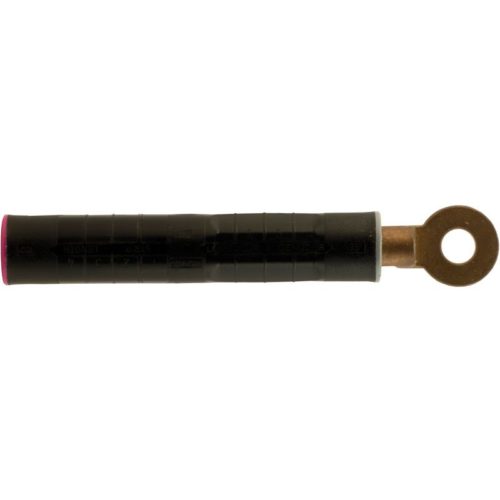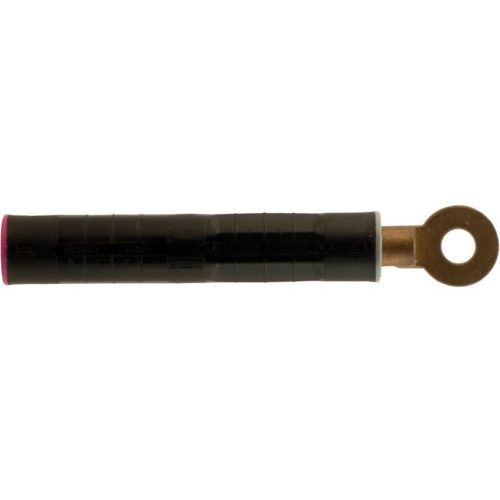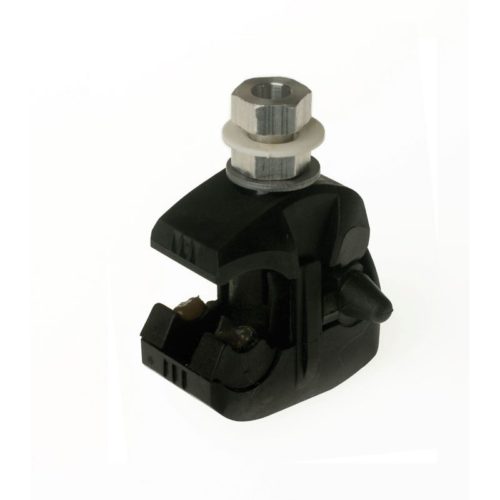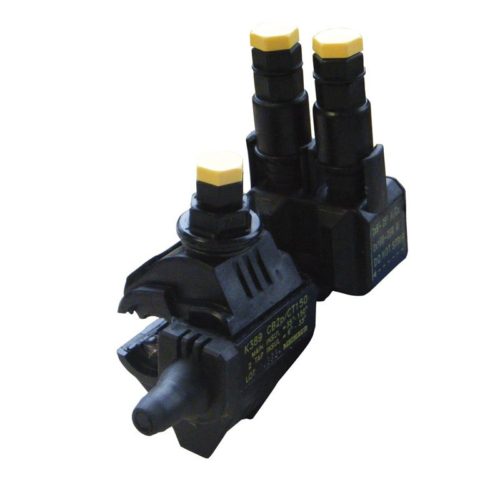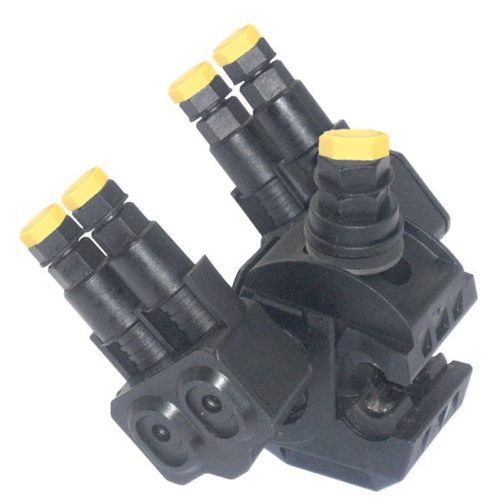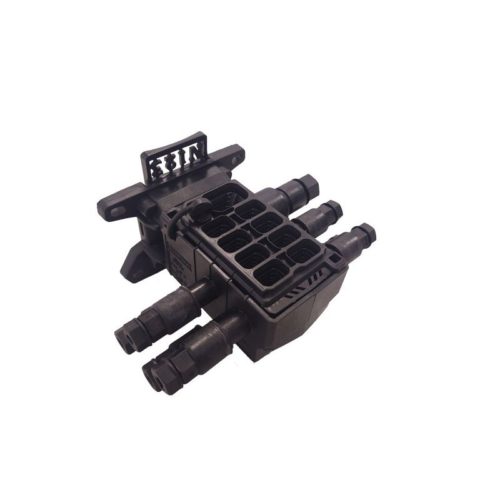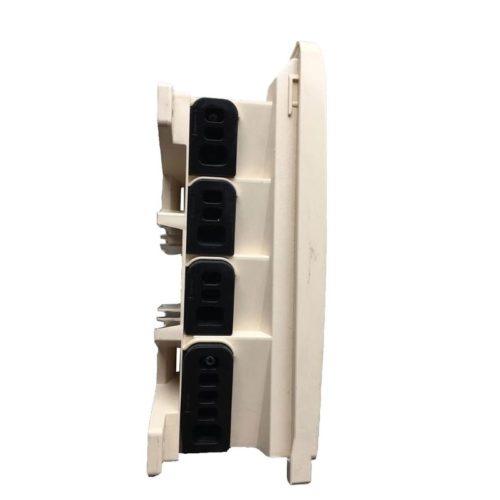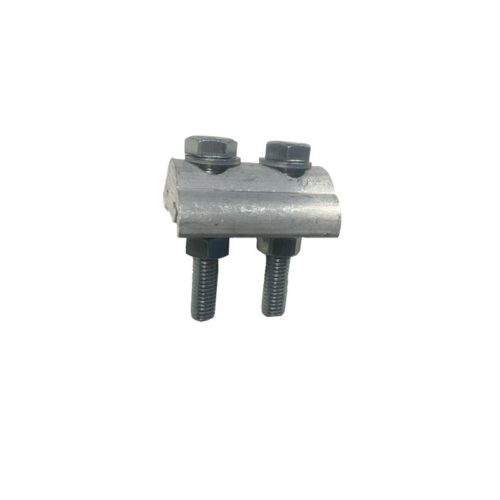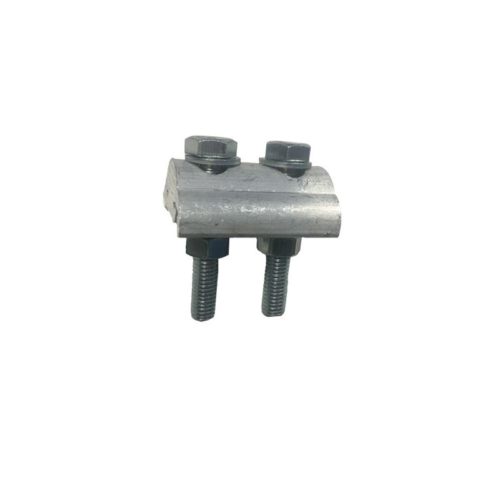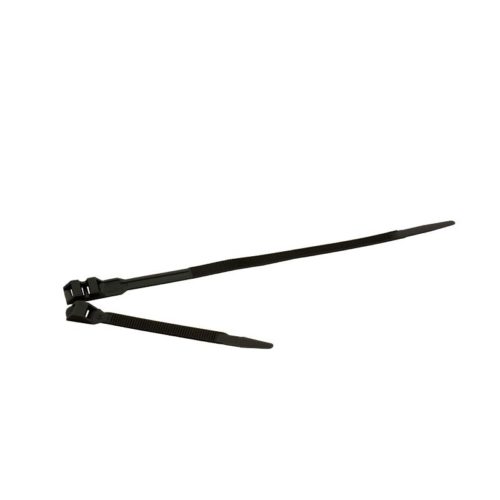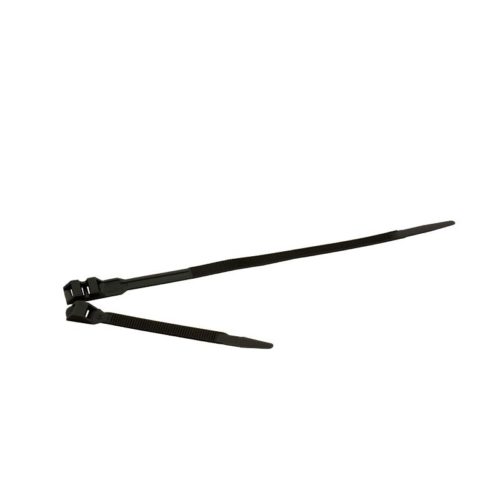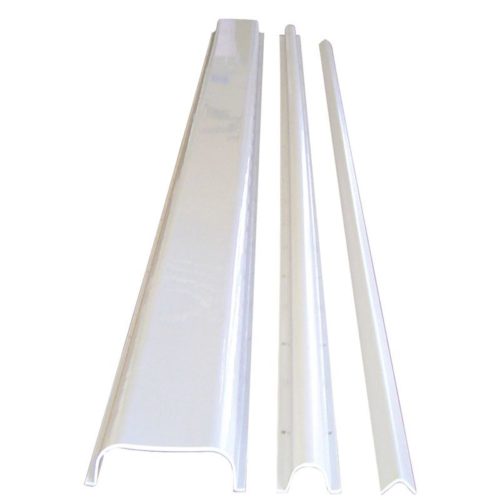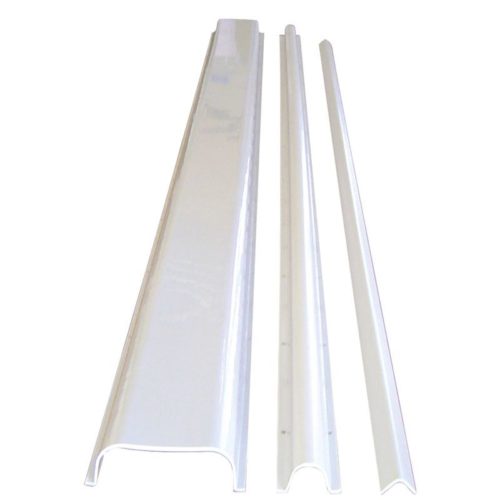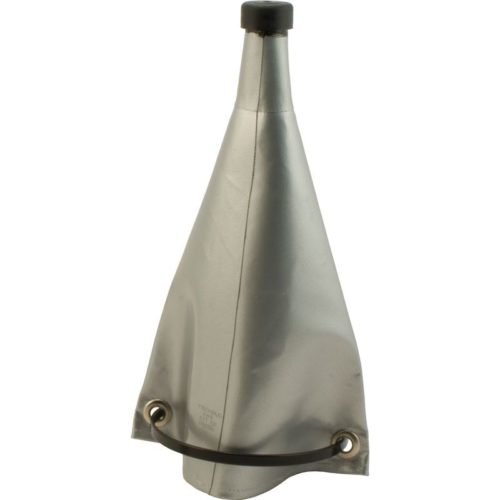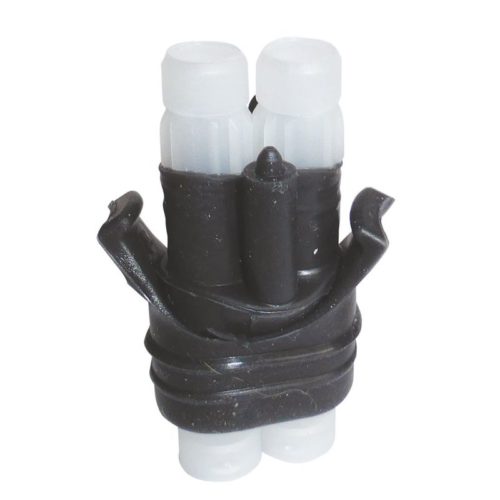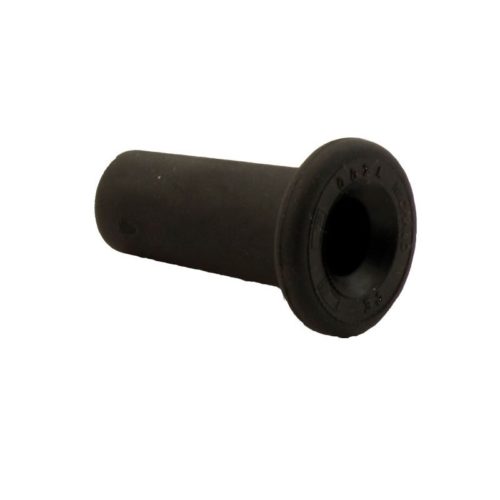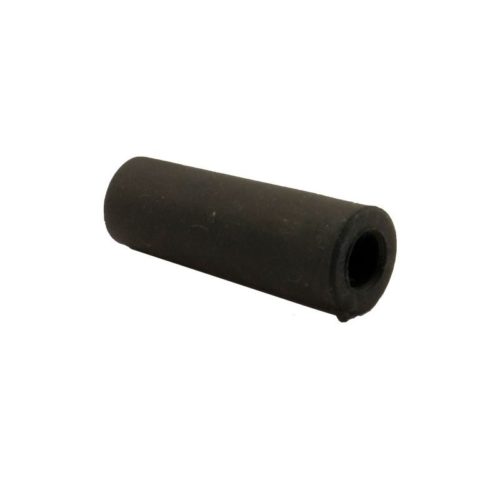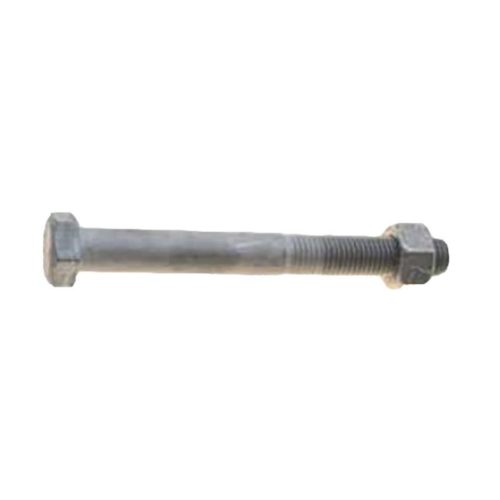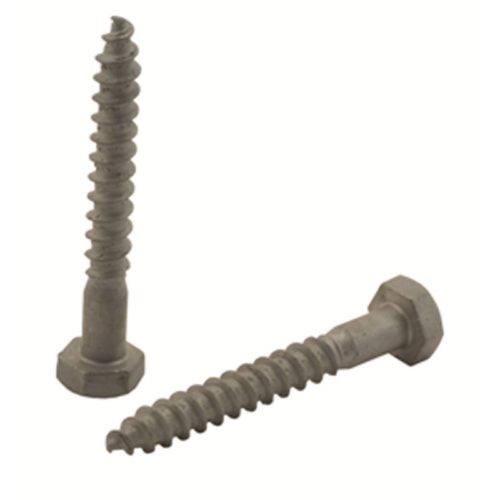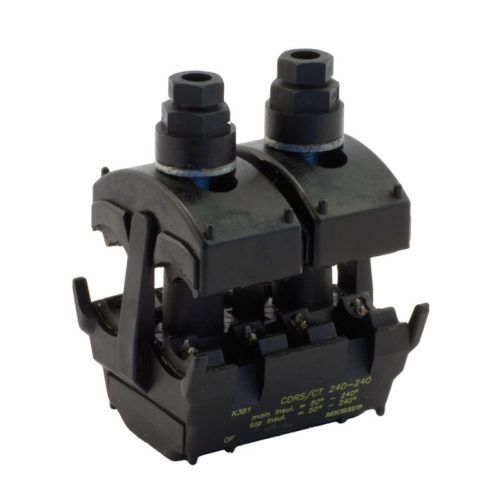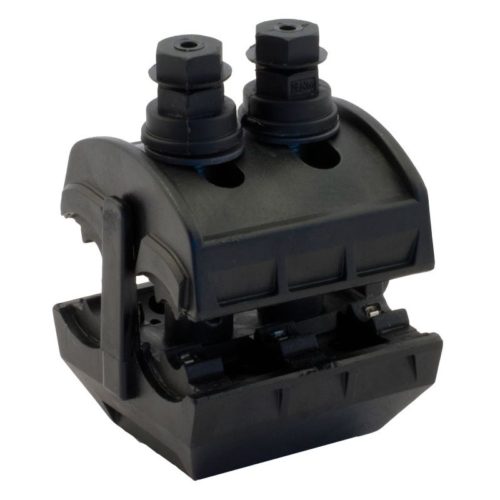-
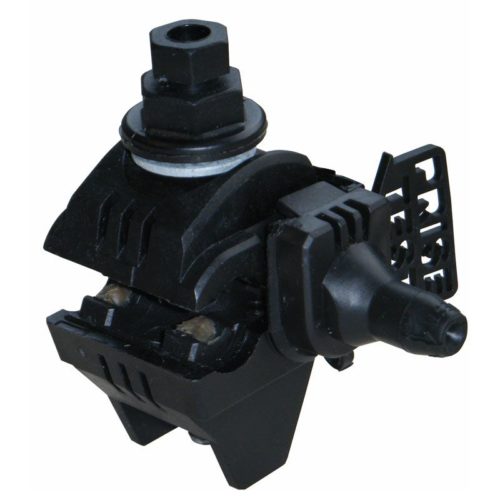
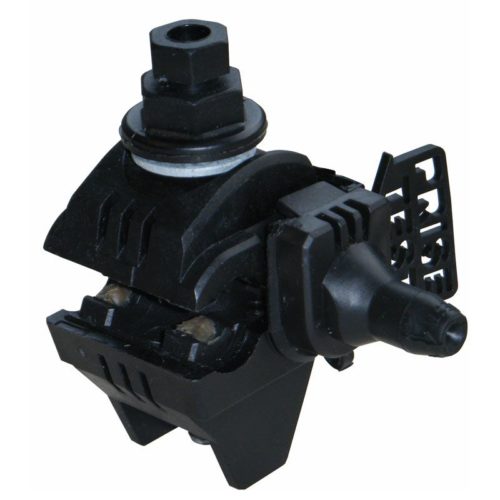 This connector is designed to connect the insulated service conductors to the low voltage A.B.C. (Aerial Bundled Conductors). It is equipped with a Test probe on the flexible sealing end cap. This enables the potential to be checked between 2 connectors installed on neutral and phase conductors and thus ensures good connection.
This connector is designed to connect the insulated service conductors to the low voltage A.B.C. (Aerial Bundled Conductors). It is equipped with a Test probe on the flexible sealing end cap. This enables the potential to be checked between 2 connectors installed on neutral and phase conductors and thus ensures good connection. -
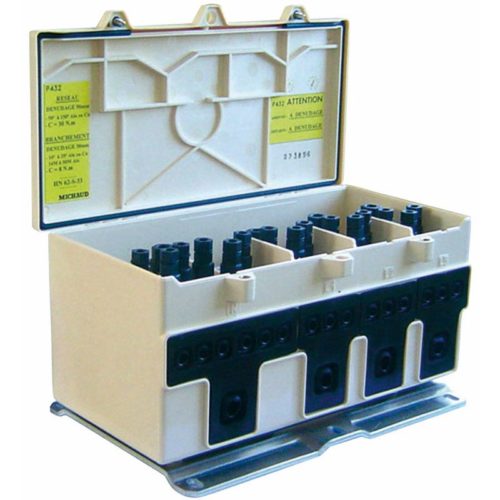
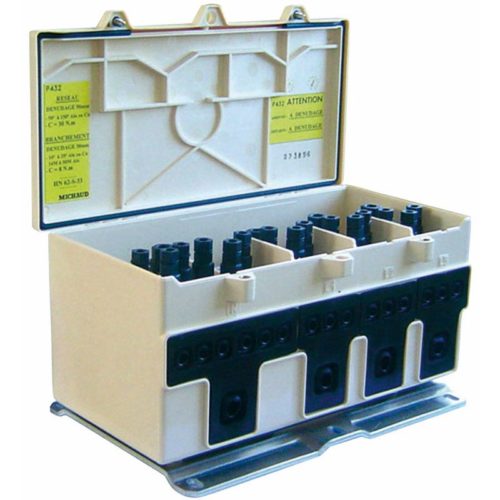 The box with 3 outlets is designed to establish up to 6 single phase connections or up to 3 three phase connections at one point of the low voltage aerial bundled network. The box with 7 outlets is designed to establish the junction of 2 overhead networks and the tap contact of 6 single phase or three phase connections maximum. These boxes can be installed on a façade or a pole. They can also be used at the network end.
The box with 3 outlets is designed to establish up to 6 single phase connections or up to 3 three phase connections at one point of the low voltage aerial bundled network. The box with 7 outlets is designed to establish the junction of 2 overhead networks and the tap contact of 6 single phase or three phase connections maximum. These boxes can be installed on a façade or a pole. They can also be used at the network end. -
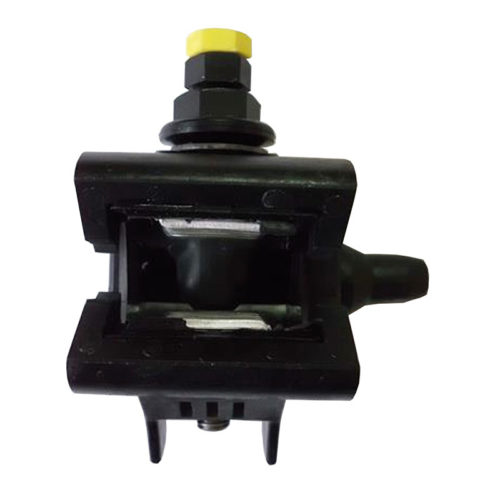
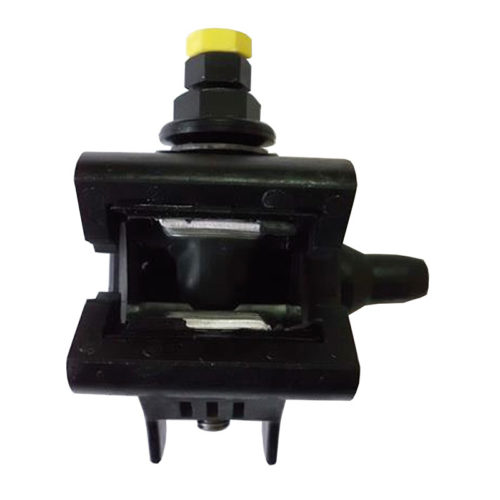 This connector designed to connect the insulated service conductors to the low voltage overhead aluminium alloy or copper bare conductor network. Two versions are available according to the type of conductor to be connected (Al or Cu). The tap and main cables are connected separately step by step to improve the electrical connection: 1. First the tap line is connected by piercing the insulation, 2. Then the main line is connected. Installation can be carried out under a maximum load of 100A.
This connector designed to connect the insulated service conductors to the low voltage overhead aluminium alloy or copper bare conductor network. Two versions are available according to the type of conductor to be connected (Al or Cu). The tap and main cables are connected separately step by step to improve the electrical connection: 1. First the tap line is connected by piercing the insulation, 2. Then the main line is connected. Installation can be carried out under a maximum load of 100A. -
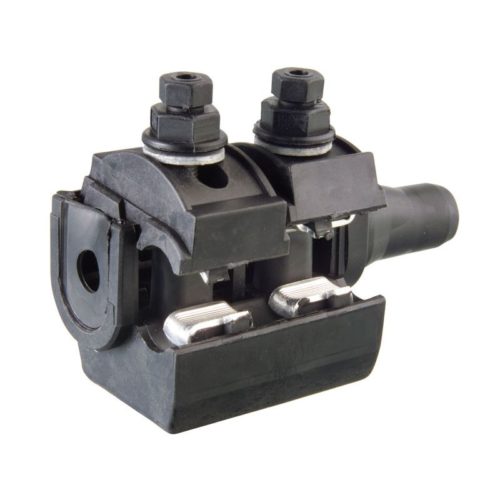
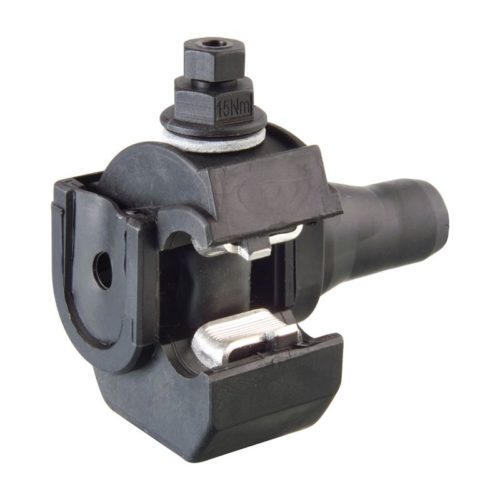 This connector is designed to connect a low voltage A.B.C. (Aerial Bundled Conductors) network to another low voltage aluminium alloy or copper bare conductors network. The section of the bare conductors is from 7 to 240mm² depending on the model. The section of the insulated cables is from 25 to 150mm² depending on the model.
This connector is designed to connect a low voltage A.B.C. (Aerial Bundled Conductors) network to another low voltage aluminium alloy or copper bare conductors network. The section of the bare conductors is from 7 to 240mm² depending on the model. The section of the insulated cables is from 25 to 150mm² depending on the model. -
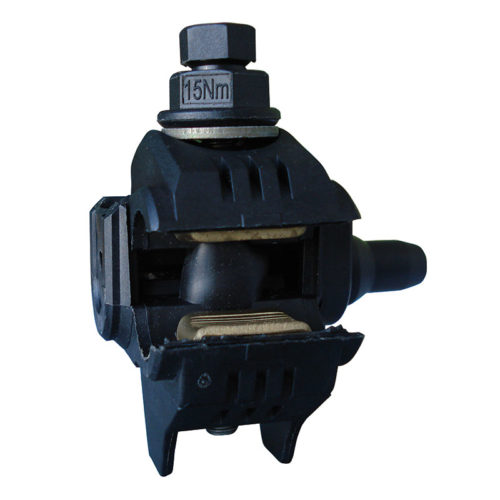
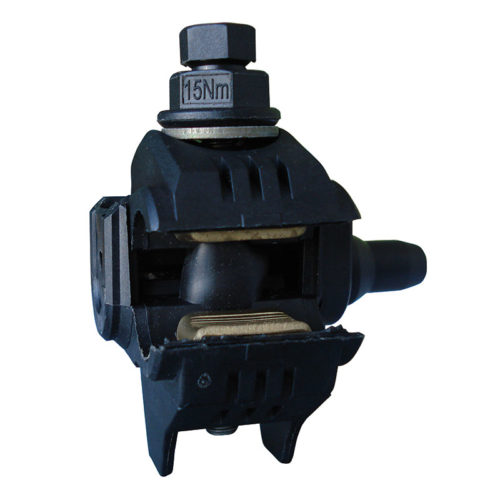 This connector is designed to connect the insulated service conductors to the low voltage overhead copper or aluminium alloy bare conductor network. Two versions are available according to the type of conductor to be connected (Al or Cu): - CNA (with aluminium alloy contact bridges), - CNU (with rough brass contact bridges).
This connector is designed to connect the insulated service conductors to the low voltage overhead copper or aluminium alloy bare conductor network. Two versions are available according to the type of conductor to be connected (Al or Cu): - CNA (with aluminium alloy contact bridges), - CNU (with rough brass contact bridges). -
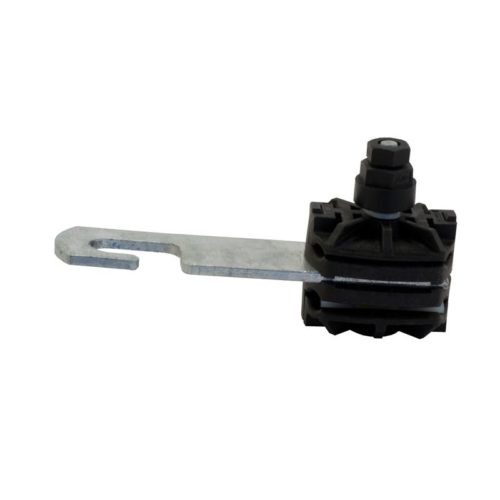
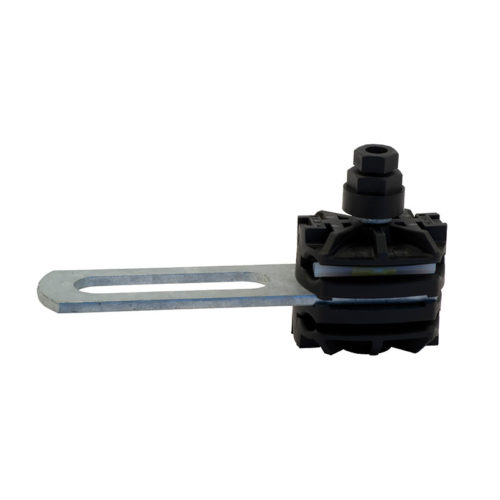 The service anchoring assembly EA 25 is designed for fixing low voltage service A.B.C. (Aerial Bundled Conductors) with capacity of 2x6 to 4x25mm². The anchoring clamp is also available in an adjustable hook version. The service anchoring assembly PA 35 is designed for fixing or suspending low voltage service A.B.C. (Aerial Bundled Conductors) with capacity of 3x16 to 4x35mm².
The service anchoring assembly EA 25 is designed for fixing low voltage service A.B.C. (Aerial Bundled Conductors) with capacity of 2x6 to 4x25mm². The anchoring clamp is also available in an adjustable hook version. The service anchoring assembly PA 35 is designed for fixing or suspending low voltage service A.B.C. (Aerial Bundled Conductors) with capacity of 3x16 to 4x35mm². -
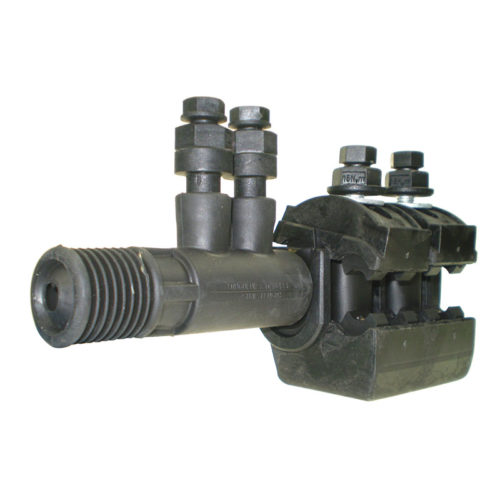
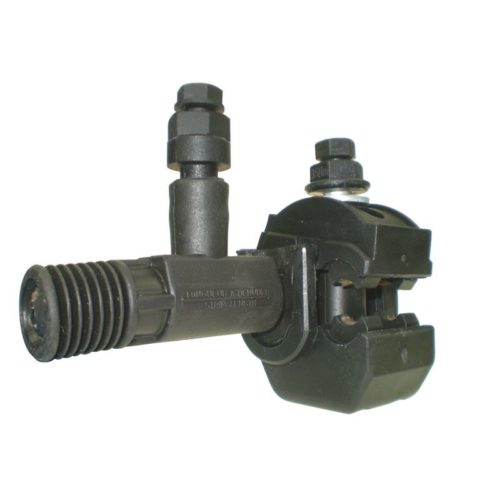 This c onnector is de signed to connect a low voltage A.B.C. (Aerial Bundled Conductors) to another network of the same type or to a low voltage aluminium alloy or copper bare conductors network. In main line, the section of the insulated conductors is from 25 to 150mm² depending on the model, and is from 7 to 120mm² on bare conductors. In tap line, the section of the insulated conductors is from 25 to 70mm² and from 35 to 150mm² depending on the model.
This c onnector is de signed to connect a low voltage A.B.C. (Aerial Bundled Conductors) to another network of the same type or to a low voltage aluminium alloy or copper bare conductors network. In main line, the section of the insulated conductors is from 25 to 150mm² depending on the model, and is from 7 to 120mm² on bare conductors. In tap line, the section of the insulated conductors is from 25 to 70mm² and from 35 to 150mm² depending on the model. -
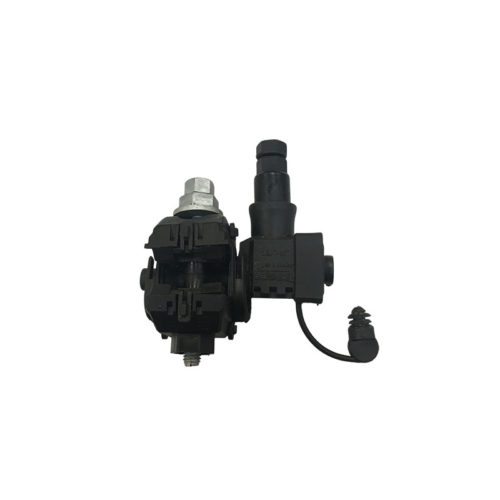
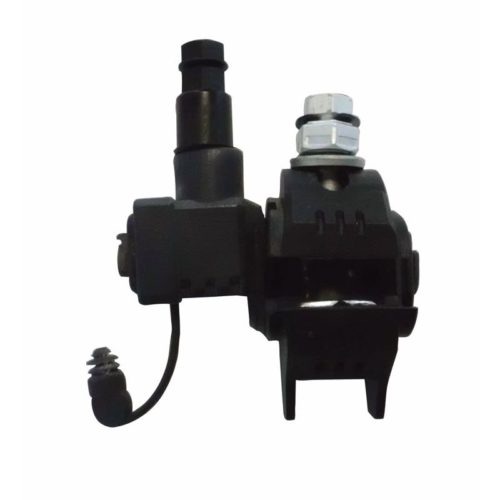 The dismountable tap contact single service connector designed to connect independently the insulated service conductors to the low voltage A.B.C. (Aerial Bundled Conductors). While connection of the main line conductor uses insulation piercing technology, that of the tap line uses stripping technology. The bare conductor service connector with independent tightening is used to connect independently the insulated service conductors to the low voltage overhead copper bare conductor network.
The dismountable tap contact single service connector designed to connect independently the insulated service conductors to the low voltage A.B.C. (Aerial Bundled Conductors). While connection of the main line conductor uses insulation piercing technology, that of the tap line uses stripping technology. The bare conductor service connector with independent tightening is used to connect independently the insulated service conductors to the low voltage overhead copper bare conductor network. -
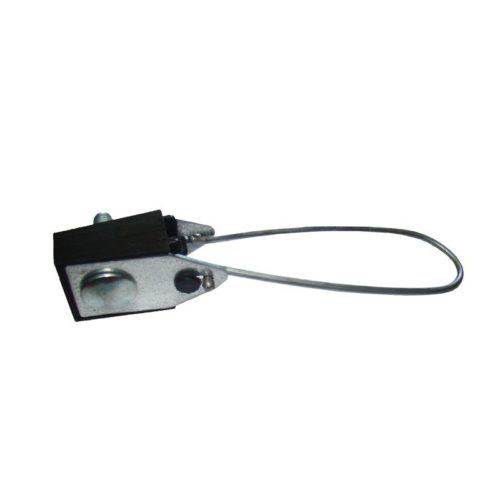
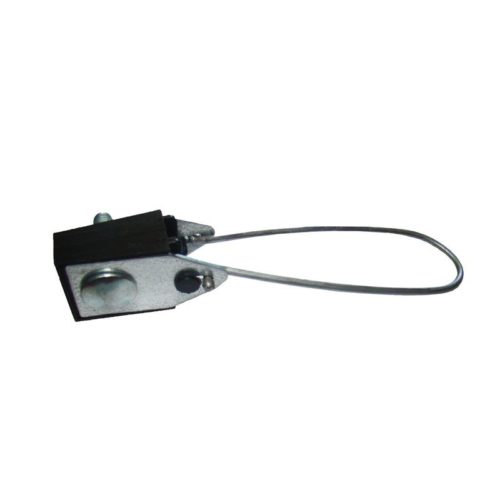 These anchoring and suspension clamps are designed to anchor and to hold the A.B.C. (Aerial Bundled Conductors) network. This range is rather designed to self-supporting cables. The suspension bracket is designed to fix clamps on a pole or a wall. The bracket fixing is performed by straps or screws. The hook is used to fix an anchoring clamp on a pole or a wall. It is implemented once holes are drilled.
These anchoring and suspension clamps are designed to anchor and to hold the A.B.C. (Aerial Bundled Conductors) network. This range is rather designed to self-supporting cables. The suspension bracket is designed to fix clamps on a pole or a wall. The bracket fixing is performed by straps or screws. The hook is used to fix an anchoring clamp on a pole or a wall. It is implemented once holes are drilled. -
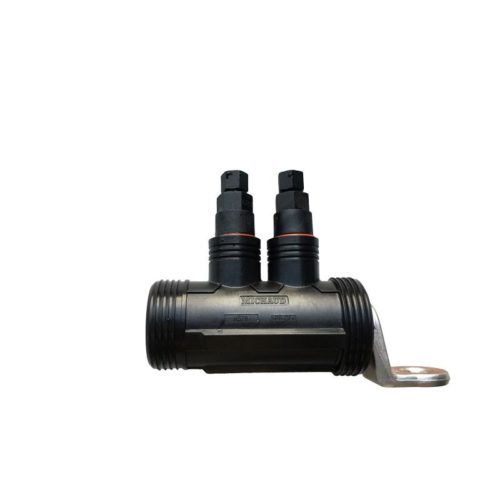
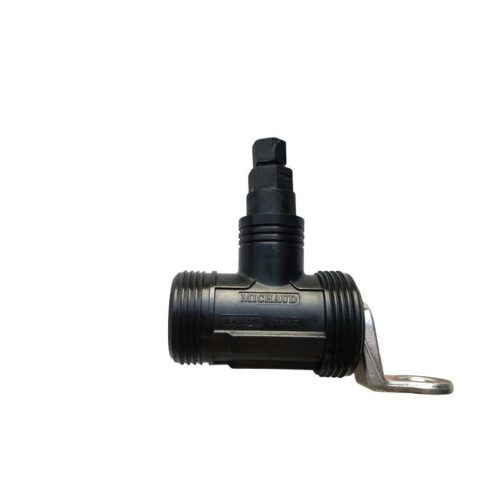 These preinslated lugs with mechanical tightening are used to connect aerial aluminum or copper conductors, solid or stranded round core, to copper equipment terminals. They are to be used without mechanical load. They are made of tinned copper which allows compatibility to copper and aluminium. The connection of the conductor is ensured by one or two shear head screws, for optimal tightening.
These preinslated lugs with mechanical tightening are used to connect aerial aluminum or copper conductors, solid or stranded round core, to copper equipment terminals. They are to be used without mechanical load. They are made of tinned copper which allows compatibility to copper and aluminium. The connection of the conductor is ensured by one or two shear head screws, for optimal tightening. -
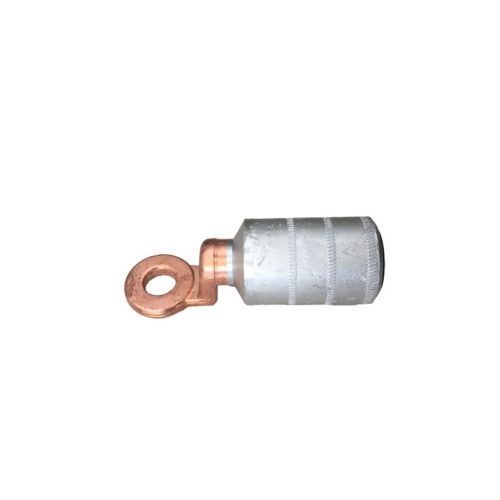
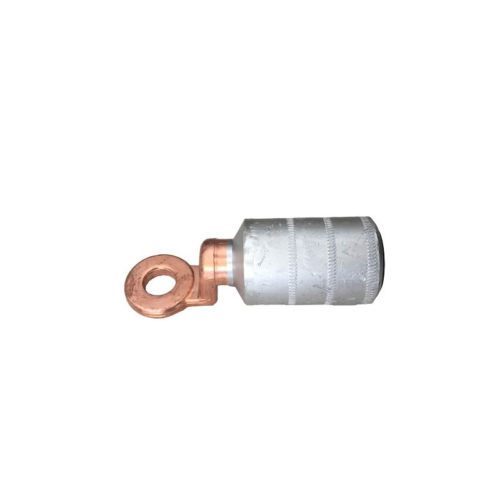 The tubular lug is designed to connect cable. It is made of tinplated copper (by electrolysis). It is manufactured with an inspection hole and socketing. It is implemented with hexagonal compressed connection. It allows copper and aluminium conductors. This lug meets the requirement of the NFC 20-130 standard. The friction welded lug is used to connect aluminium bare conductors to copper equipment terminals. It is used for industrial or indoor applications. This lug is implemented by crimping and out of traction. This lug meets the requirement of the NF C 63-061 standard. The Al/Cu tinned aluminium lug is used to connect aluminium bare conductors to copper equipment terminals. It is applied with a deep crimping.
The tubular lug is designed to connect cable. It is made of tinplated copper (by electrolysis). It is manufactured with an inspection hole and socketing. It is implemented with hexagonal compressed connection. It allows copper and aluminium conductors. This lug meets the requirement of the NFC 20-130 standard. The friction welded lug is used to connect aluminium bare conductors to copper equipment terminals. It is used for industrial or indoor applications. This lug is implemented by crimping and out of traction. This lug meets the requirement of the NF C 63-061 standard. The Al/Cu tinned aluminium lug is used to connect aluminium bare conductors to copper equipment terminals. It is applied with a deep crimping. -
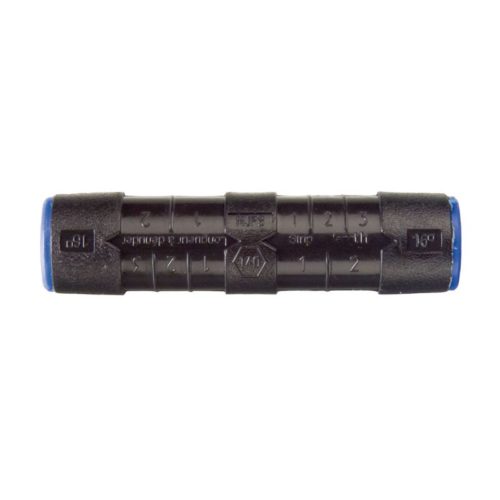
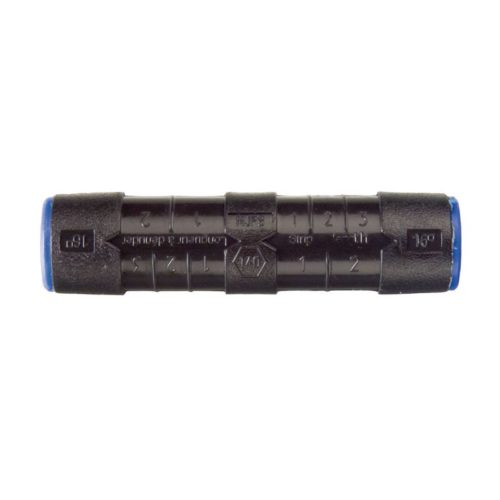 This preinsulated sleeve is designed for the connection of copper or aluminium stranded core overhead insulated conductors with traction or with no mechanical load. It is used for the installation, repair or modification of low voltage service lines. The junction can be established between two conductors of equal or unequal sections. All combinations of sections are possible. The section of the cables ranges goes from 6 up to 35mm².
This preinsulated sleeve is designed for the connection of copper or aluminium stranded core overhead insulated conductors with traction or with no mechanical load. It is used for the installation, repair or modification of low voltage service lines. The junction can be established between two conductors of equal or unequal sections. All combinations of sections are possible. The section of the cables ranges goes from 6 up to 35mm².
